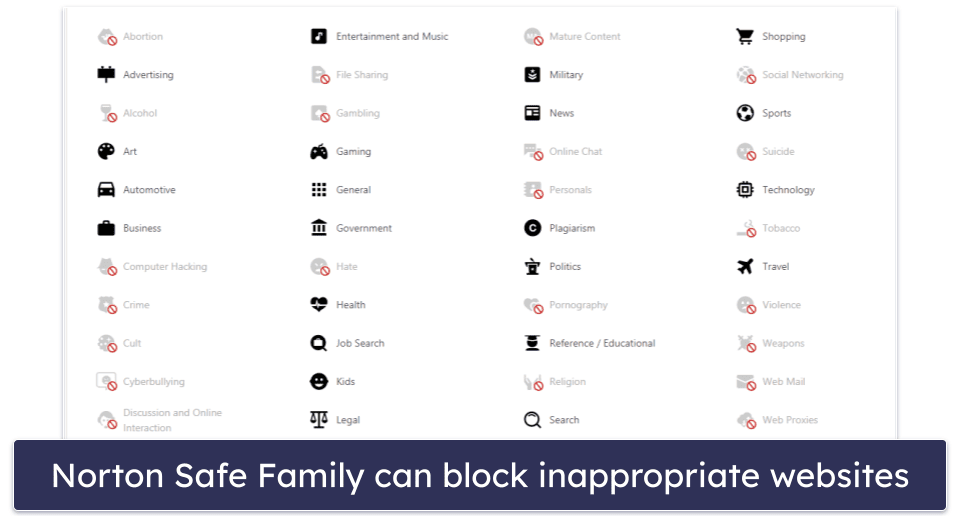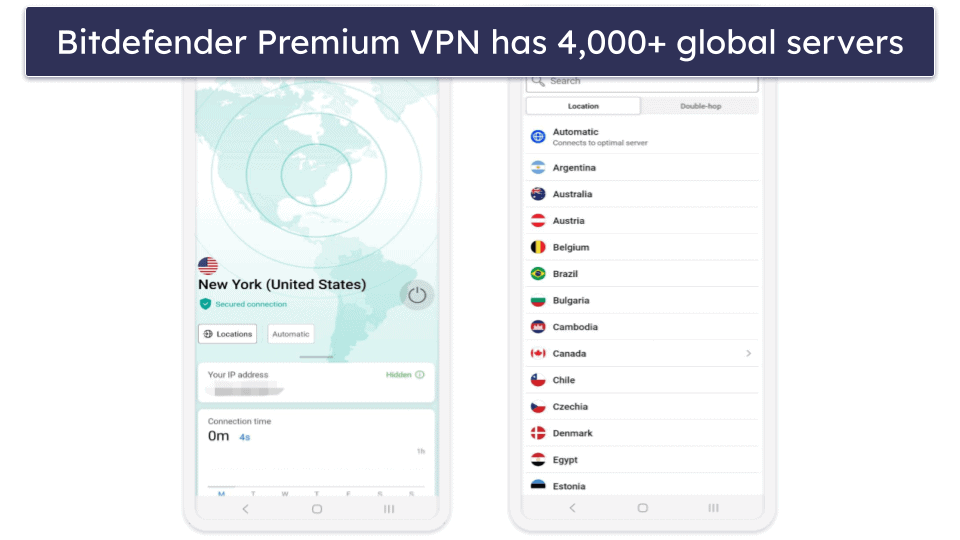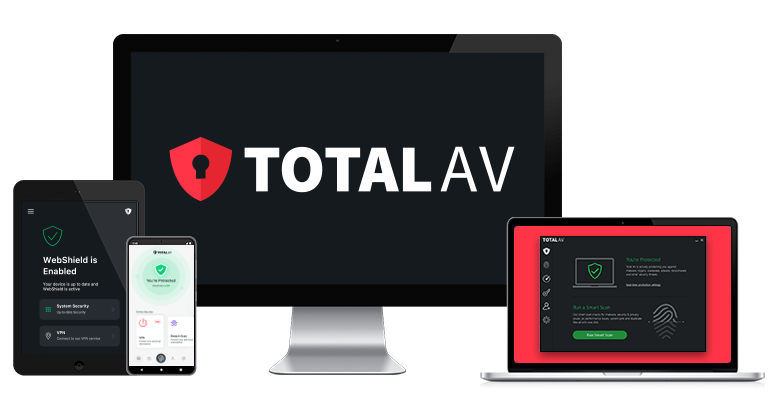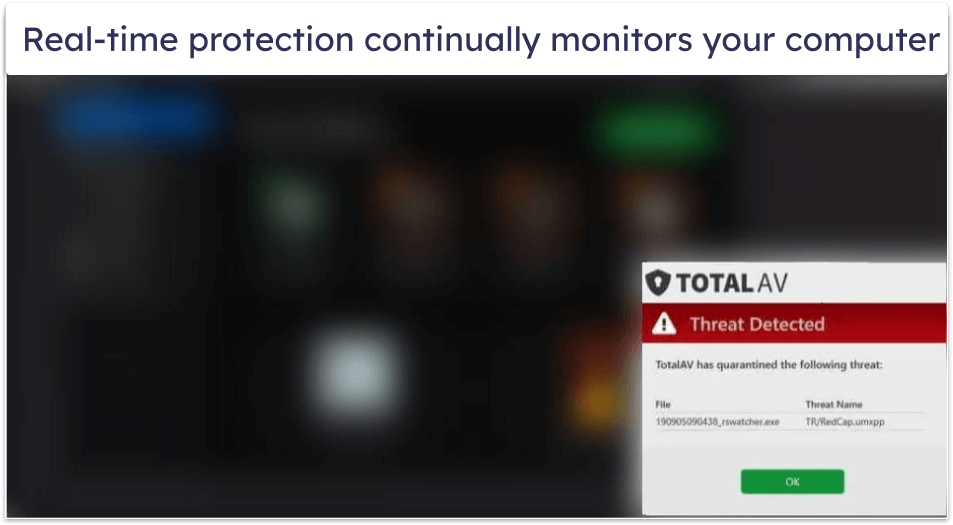
Sam Boyd
Updated on: January 12, 2024
Short on time? Here’s how to remove the Google Security Warning Virus in 2024:
- Scan Your System. Run a full device scan using a premium antivirus like Norton.
- Remove the Google Security Warning Virus. Once the scan is done, let your antivirus remove all instances of the Google Security Warning virus and any other malware.
- Stay Safe. Maintain your protection against malware infections by choosing a high-quality internet security suite. I like Norton best, because it has an advanced malware scanner, flawless virus detection, and great extra features like an unlimited VPN, a password manager, and dark web monitoring. You can try it with a 60-day money-back guarantee.
The Google Security Warning is a fake alert designed to trick you into giving away sensitive information. A scammer’s phone number is often included in the alert. Never call it because scammers will trick you into installing malware or paying for a service you don’t need. Close your web browser and run a virus scan using a secure antivirus such as Norton instead.
Note: you can receive real Google alerts via email when an unrecognized device logs into your Google account, but these are sent from no-reply@accounts.google.com and contain your personal details.
Seeing a fake Google Security Warning suggests you’re visiting a malicious website, or you have malware on your computer. Remove the malware from your system by scanning your PC. I recommend using Norton, our best antivirus of 2024. Plans start at just $54.99 / year*, and there’s a generous 60-day money-back guarantee.
60-Days Risk-Free — Try Norton Now
Step 1. Identify the PUP/Adware Issuing the Google Security Warning With Your Antivirus (And Don’t Make the Problem Worse!)
To begin, unplug any USB devices plugged into your computer’s USB ports. Many malware files can duplicate themselves onto removable drives and other devices.
Run a full system scan of your PC using a secure antivirus suite like Norton. This scan will take a long time and may consume a lot of system resources, so schedule it for when you won’t be using your computer. Most antiviruses let you schedule scans.
Allow the scan to run through to completion. Even if you notice items in the infected file list that you assume are related to the Google Security Warning, don’t stop the scan. Stopping a virus scan early is never a smart idea, because you have no way of knowing how many infections are on your computer. When the virus scan is complete, you can proceed to step 2.
Step 2. Remove the PUP/Adware and Delete Any Other Infected Files
When your antivirus software displays the scan results screen, you’ll see a list of infected files. Go through everything on the list carefully and remove any malware. Ensure you don’t get rid of any false positives (safe files your antivirus mistakenly marks as malicious). If you can’t decide whether a file is malicious or safe, your antivirus’s customer support team can help you.
Restart your computer and perform a full disk scan again. Doing this will prevent any malware booted into your system’s memory from running and causing further damage. It’s a good idea to run the second scan as soon as your computer restarts, because malware files may try to run on your disk at startup.
Your second full disk scan should be quicker. Many antiviruses, including Norton, use file caching, which means they remember safe files and only look for changes on your disk since the last scan.
When the second full disk scan is complete, your infected file list should be empty. If it isn’t, your computer still has malware, and you’ll need to repeat steps 1 and 2. Keep repeating these steps until you can scan your PC without any malware threats appearing in the infected file list.
Your device is now malware-free — but remember that it’s very easy to get reinfected. It’s really important that you take the necessary steps to keep your computer protected from future attacks. To do this, proceed to step 3.
Step 3. Keep Your Device Protected From Other Unwanted Programs
You’ve now seen how easily you can get malware on your PC. Keeping your device safe from malware is crucial for preserving your privacy and ensuring your computer runs smoothly. By adopting good cybersecurity habits, you can lower your chances of encountering viruses, malware, and other online threats. Here’s how to avoid malware in 2024:
- Keep Your Software, OS, and Drivers Up-To-Date: Regularly updating your software, operating system, and drivers is essential for maintaining good security on your devices. That’s because when new software is released, hackers are very likely to find vulnerabilities in the software and exploit it. Developers release updates to patch those vulnerabilities, so it’s important you enable automatic updates whenever possible and consistently check for new versions of your software, OS, and drivers. This proactive approach will help minimize the potential risks and keep your devices running smoothly.
- Don’t Download Suspicious Files: Be careful when downloading files from the internet, as cybercriminals often hide malicious software in seemingly harmless files. Never click on suspicious links or download attachments from senders that you don’t recognize — as these links may contain malware — and always verify the legitimacy of a website or source before downloading anything from it. A good way to do this is to use a trustworthy antivirus program like Norton. Norton can intercept malicious files before you download them and mark dangerous websites with a red cross on search engines. By being cautious online, you can significantly reduce the chances of downloading and installing malware on your device.
- Secure Your Wireless Network and IoT Devices: Ensuring the security of your wireless network and Internet of Things (IoT) devices is essential for protecting your personal information. A good way of doing this is to set up a strong, unique password for your Wi-Fi network using a password manager like 1Password. Once you’ve set up a strong password, look for a lock symbol next to your network’s name to confirm your network is password-protected. Similarly, look in the manual of any IoT device you own (or check online), to see how to set passwords for them. Once you know how to do so, follow the same steps using a secure password manager. Note: If you have to connect to a public network (for example, in a coffee shop), you should download a VPN like ExpressVPN to protect your data from trackers.
- Download a Secure Antivirus Program: A reliable antivirus program is key to preventing malware threats such as viruses, ransomware, and phishing attacks. An antivirus program will let you perform a full system scan to keep your device secure and include additional features like real-time scanning, automatic updates, and a strong firewall. Norton is an excellent choice, as it offers 100% malware detection rates, a good range of additional features (including a Smart Firewall), and a user-friendly interface.
Best Antiviruses for Removing the Google Security Warning in 2024
Quick summary of the best antiviruses for removing the Google Security Warning in 2024:
- 🥇1. Norton — Best overall antivirus in 2024.
- 🥈2. Bitdefender — Best for users wanting a lightweight antivirus.
- 🥉3. TotalAV — Best beginner-friendly antivirus on the market.
1. 🥇 Norton — Best Overall Antivirus in 2024
Norton is my favorite antivirus in 2024. It has a 100% malware detection rate and uses an advanced malware database alongside machine learning to detect viruses, trojans, rootkits, zero-day threats, and more. Norton also has an intuitive desktop app and a user-friendly online dashboard, making it easy to access all of its features.
In addition to malware protection, Norton 360 offers a range of extra features, including:
- Anti-phishing protection.
- Firewall.
- Secure VPN.
- Parental controls.
- Secure Browser.
- Password manager.
- And much more…
Norton’s anti-phishing protection is really good. I tested Secure Browser (Norton’s special browser) and it detected and blocked 100% of the sample phishing websites I visited during my tests — which is more phishing websites than Windows Defender blocked. Secure Browser also comes with Norton’s Safe Search preloaded — Safe Search uses color-coded assessments to help you evaluate the safety of search results before clicking on them (green for safe, orange for potentially unsafe, and red for dangerous). It’s a helpful feature, but it’s not without its limitations. During my tests, it occasionally mislabeled pirate websites as safe and marked some genuinely safe websites as “untested”.
I also like Norton’s parental controls, which help parents keep their children safe while they’re using the internet. The parental controls let you monitor your children’s online activity, block inappropriate websites, and more. One of my favorite features is that you can block specific apps on mobile devices — allowing you to prevent your kids from accessing inappropriate or potentially harmful programs including social media or dating apps.
Starting at just $54.99 / year*, all Norton 360 plans are a great value. However, I particularly like the Deluxe plan, which costs $49.99 / year* and offers coverage on up to 5 devices. US customers can also opt for Norton’s LifeLock plans, which provide some of the best identity theft protections on the market, including live credit report monitoring and up to $1 million in insurance cover. All Norton plans come with a 60-day money-back guarantee, so you can try them out today and see if they’re a good fit for you.
2. 🥈 Bitdefender — Best for Users Wanting a Lightweight Antivirus
Bitdefender is a popular antivirus program that uses cloud-based technology to provide high-level protection against malware without impacting your system performance. In my tests, Bitdefender successfully detected and removed all malware samples, including trojans, worms, and rootkits, earning a perfect detection rating.
I really like Bitdefender’s extra features, which include:
- Ransomware protection.
- Microphone and webcam protection.
- Password manager.
- Parental controls.
- Anti-theft protection.
- Safepay secure browser.
- VPN (200 MB per device per day limit).
- And more…
Bitdefender’s VPN is pretty good — it provides fast connection speeds, a good number of servers, a strict no-logs policy, and 256-bit AES encryption to keep your data safe. However, most Bitdefender plans limit you to 200 MB per day per device on the VPN. Norton, on the other hand, offers an unlimited-data VPN on all of its plans. Furthermore, Norton has a few extra features that Bitdefender doesn’t have, such as dark web monitoring.
That said, I really like Bitdefender’s Safepay feature. It ensures that your online banking transactions are safe and secure by opening a secure browser whenever you access your online banking website. This secure browser is protected by Bitdefender’s advanced encryption and blocks all potential phishing attempts or fraudulent websites. It’s especially important in today’s world, where online banking has become increasingly popular and hackers are finding new ways to steal your sensitive information. With Safepay, you can be confident that your online transactions are protected from prying eyes.
Overall, Bitdefender is a great choice and provides a really good value for money. Antivirus Plus starts at $29.99 / year and offers excellent malware protection for up to 3 Windows devices. Premium Security costs $79.99 / year, extends coverage to Mac, iOS, and Android devices, and includes every Bitdefender feature and an unlimited-data VPN. Honestly, both plans are really affordable and offer reliable protection against malware. Whichever one you go for, all Bitdefender plans come with a 30-day free trial and a 30-day money back guarantee.
Read our Full Bitdefender Review
3. 🥉 TotalAV — Best Beginner-Friendly Antivirus on the Market
TotalAV is a comprehensive security suite that provides complete protection against various online threats. It scored a 99.6% malware detection rate in my tests — finding all samples of the Google Security Warning virus — and like Norton and Bitdefender, it didn’t impact my system performance during full scans.
TotalAV comes with a useful range of features, including:
- Anti-phishing protection.
- System tune-up tools.
- Password manager.
- Virtual private network (VPN).
- Safe browsing extension.
TotalAV’s anti-phishing protection is really good, providing strong defense against deceptive websites. It even blocked shady websites that my web browser’s built-in protections missed, which is cool. Its real-time protection continually monitors your computer, too, ensuring that malicious files are detected and neutralized before they can cause any harm. It consistently blocked malware downloads (even those hidden in compressed folders) during my tests.
In addition, TotalAV’s performance optimizer outperformed competitors in freeing up computer space, allowing me to clear nearly 4 GB of junk from my computer. I also appreciate TotalAV’s VPN — it’s secure and fast across all its servers, and it works with all the most popular streaming platforms. In fact, it ranks as the best antivirus-integrated VPN available today.
I appreciate how easy TotalAV is to use. Its interface is super intuitive and beginner-friendly, so it’s a great pick if you’re less tech-savvy. That said, it offers enough customization options to satisfy more advanced users too.
TotalAV’s plans start at $19.00 / year, with various options available to fit different needs and budgets. My favorite plan is TotalAV Internet Security, which covers 5 devices across all operating systems and includes all of TotalAV’s features except the ad blocker and password manager for just $39.00 / year. All plans come with a 7-day free trial and a 30-day (14-day for monthly subscribers) money-back guarantee.
Comparison of the Best Antiviruses for Removing the Google Security Warning in 2024
Frequently Asked Questions
Are Google security alerts real?
Google security alerts are real if they were sent to your email inbox and addressed from no-reply@accounts.google.com. Otherwise, Google security alerts are fake notifications used by hackers to trick you into giving them access to your PC or downloading malware. If you receive a fake Google alert, you should close the alert and run a full scan of your computer using a secure antivirus like Norton.
What to do if I get a Google security alert?
Should Google send a genuine security alert to you, it indicates that an unidentified device is attempting to access your account. In such a situation, you’re presented with these choices:
- Click the Check activity button on the alert and verify it was you who attempted to log into your account. Make sure the email came from no-reply@accounts.google.com first.
- Change your account password using a secure password manager like 1Password to prevent any unauthorized access.
If you received a fake Google alert through your web browser, you need to close it and scan your computer using a secure antivirus suite.
Why do I keep getting security alerts from Google?
You might have a PUP/adware issuing a fake alert via your web browser if you keep getting security alerts from Google. Alternatively, someone is trying to force their way into your Google account.First, scan your PC using a secure antivirus suite to ensure you haven’t got any malware issuing the alert. Then, if you’re still receiving the alert, change your Google password with a password manager like 1Password to ensure any brute force attempts fail.
How to remove a security alert in Gmail?
Don’t dismiss genuine security alerts from Gmail. Such alerts fortify your account against unauthorized device logins. While you can’t stop Google from alerting you about new device logins, you can choose “Remember this device” to reduce notifications from recognized devices, blending improved security with fewer alerts.
If you’ve set up two-factor authentication (2FA) for your Google account, here’s how to turn it off:
- Click on your profile picture in the top right corner of Gmail and click Manage your Google Account.
- Click Security from the menu on the left side of your screen.
- Click 2-Step Verification.
- Click Turn off.
If you choose to turn off 2FA, I suggest getting a good antivirus like Norton. This is crucial as hackers might use malware to breach your accounts. Additionally, if Google’s 2FA isn’t appealing due to its need for an authenticator app, consider a premier password manager like Dashlane. It has built-in authenticators, offering fast and secure 2FA logins on many websites.
How did the Google Security Warning virus get on my computer?
The Google Security Warning virus can get on your computer in a number of ways — whether it’s via an infected email attachment, a link on a compromised website, or hidden within downloaded software. Using a reliable antivirus with real-time protection (like Norton) and being cautious about your online behavior can protect against such threats.
What damage can Google Security Warning do?
The Google Security Warning virus is more than an annoyance — it’s a potential gateway to broader security breaches. By displaying false alerts or encouraging the download of malicious software, it can create vulnerabilities in your system. Moreover, it might track your online activity to steal sensitive data, like passwords or credit card numbers. In some instances, it could give attackers a foothold in your system, enabling further malicious activities. Employing a solid antivirus program and following best practices in cybersecurity can help protect you from such dangers.








